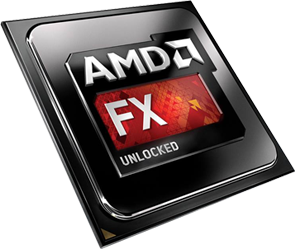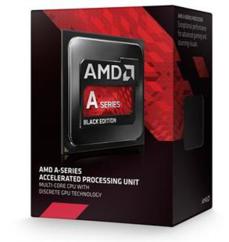Last week I kicked off what I’m calling my Holiday Buyers guides. For the first week I started off big with VR ready systems because virtual reality is just around the corner and many people are going to be looking hard at the new medium.
That being said, not everyone has an immediate interest in VR and many people can’t afford to spend that kind of money on a computer. So this week, I’m focusing on the gamer with a tight budget that want to get the best bang for their hard-earned buck.
When you’re preparing to build any system, there’s several things you need to ask yourself before selecting your parts.
- First off, establish what you are ready to spend on your PC. Do you have $800? $1200? $1500? Each of these budgets would be dramatically different builds and you need to know what you’re working with before you start. If you don’t, it’s very easy to get out of control.
- Next ask yourself what you plan to use the computer for. This is a gaming build guide so that is naturally assumed but what games do you play and what else do you do with it? Do you plan to play the latest AAA titles on release day, or are you dedicated to one specific game like League of Legends or Counter-Strike? Do you have any intention of streaming your gaming online? What about recording it for YouTube later? While we’re talking about YouTube, do you have any plans to be editing video regularly? The answers to these questions will heavily influence what kind of system to build.
For example, if you play LOL, CS:GO or really any other eSports game competitively, then you likely don’t have much time, and possibly not much interest, in the latest AAA title coming out next week that requires the most expensive graphics card money can buy and the fastest CPU you can throw at it. For those people, there’s no reason to break the bank. AMD and Nvidia both have strong products catered to gamers in that category for very affordable prices.

For these gamers, AMD’s top tier A10 APU processor is an excellent choice to start with. For those unfamiliar, an APU is a CPU with integrated GPU cores on the same die. The A10-7870K represents the company’s top tier APU. It is a true quad core CPU that operates at 3.9GHz paired with the equivalent of a low tier R7 GPU which allows it to run most eSports titles at more than playable frame rates. Of course, you can pair one of these with an actual discrete GPU if desired, making this an excellent starting point for someone with a shoestring budget for their gaming needs. You can start off with just the APU and pick up an GPU upgrade down the road.
Intel offers a few budget options, such as the Pentium G series and even the entry level i3 processors, but those options will require an actual graphics card, making the price of entry a little higher. I would also highly suggest shying away from the Pentium processors, as they are simply dual cores and aren’t able to run some modern games from the past year at all. That makes the useful lifespan of the processor quite short and ultimately turns into wasted money.
If you can afford it, I would still suggest picking up a discrete GPU for your gaming needs. The GPU inside AMD’s APU is pretty solid, but it doesn’t compete with a proper graphics card. You don’t have to break the bank for a system like this either. AMD offers the R7 370, which is a decent performing card. It will do really well in eSports titles and even handle modern titles at respectable frame rates. Nvidia offers the GTX 950 and markets it directly to MOBA players. The cards are affordable, deliver very good performance (seriously don’t even bother with a 960; save yourself some money and get the 950), and it has a feature that specifically reduces input delay on MOBO games.
A system like I described above will work great for someone wanting to play the small select group of games that have carved out a long term following. These games are designed for responsiveness and not so much for their visuals, so the computers running them don’t have to be the craziest specs around.
Now, if you’re looking at playing the hottest new releases like Star Wars: Battlefront, Assassin’s Creed Syndicate and Just Cause 3, you might find that a system like the one above will come up a little lacking.

To really play with the big boys, you’ll have to shell out a bit more money. AMD offers some pretty good options for great price points, but these CPUs are starting to get a little long in the tooth. AMDs FX line has been around for several years now and has basically reached its peak. The socket that is used for these CPUs is going to be retired in the coming months when AMD launches its highly anticipated ZEN CPUs to replace the current aging crop. The upside of these processors is they are offered as 8-core CPUs and they really don’t cost very much. You can pick up a 3.5GHz FX-8320 for around $185 which is a tremendous amount of processing power for that kind of money. Just keep in mind there’s no viable upgrade path for this platform without a full overhaul.
And AMD 8-core processor is a fantastic choice for anyone wanting to do some streaming of their live gameplay. The more cores you can toss at such a task, the better off you will be. AMD’s CPUs are slower clock for clock compared to Intel Core processors, but you’ll shell out far more money to get into an Intel chip with more than two true cores. AMD offers a few 8 core processors, but I would stick with the FX 8000 series. The 9000 series processor, while faster, require special motherboards that cost more and have much higher power requirements. For a bang for the buck build, don’t bother with a 9000 series – you’ll throw away more money monthly on your power bill.
Intel’s platform is a little more money, as I mentioned earlier, but it offers the performance to back up the cost. Getting into a Core i3 processor is a good budget starter with plenty of upgradeability in the future, but don’t expect to be streaming at high frame rates on a machine equipped with an i3. These processors, while having very strong individual cores, are dual core chips and they will eventually show their limitations. Intel equips its i3 processor with Hyperthreading, which adds extra logical threads, making it operate as a quad-core, but they aren’t as good as true CPU cores.
The upgrade path for Intel’s platform is quite good if you start with an i3 though. The company uses the same socket for i3, i5 and i7 processor from the same generation. This means that and i3 rig today can be an i7 rig with a simple CPU swap down the road. Intel just went through its CPU socket transition so the current motherboards should have compatible CPUs coming for at least another generation (1.5 – 2.5 years). That being said, if you buy into the previous generation right now (which are still available at potentially great discounts), you won’t have a clear CPU upgrade path unless you pick one up used.
Graphics cards at this level of system are really going to be dictated by the overall budget, but a good rule of thumb is the allocate close to 30% of the overall budget to the graphics card. Don’t skimp out of this area: it’s by far the most necessary component for a gaming machine. Basically get the best GPU that you can afford while still being able to buy the rest of the system.
If you are working on an $800 budget, this is going to be hard to do, but try to stick with as close to the rule as possible. A Nvidia GTX 950 would fit right around that price point and offers excellent performance. For a $1000 budget, an AMD R9 380X would be solid choice. A $1200 budget is a bit of an exception: at this price point, you can either stick with the same GPU as the $1000 budget and get an i5 processor; or you can stick with the i3 and get a better GPU. An R9 390 or GTX 970 are within your reach, but only with the AMD 8-core or Intel i3 processor options. Both of those GPUs are wonderful choices, but unless you favor games that take advantage of Nvidia features like GameWorks, then the R9 390 is the better long term investment.
Beyond the CPU and graphics cards, most of the parts you select at this budget level make little to no difference. Get yourself 8GB of memory and the largest SSD that you can afford.
Motherboards at this budget level aren’t as much of a concern as well. It’s only at the high end, when you plan to overclock or add many components, that you need to put a lot of consideration in. Get a board from a reputable company like Asus, MSI, or Gigabyte that fits within your budget. For Intel systems, don’t bother with the Z170 chipset; you can get away with the H170 unless you plan to overclock. For AMD systems any board with the 970 chipset should do fine.
When it comes to power supply, I try to get an 80+ Gold Rated power supply from Corsair or EVGA when I can, but on the lower budget builds, an EVGA 80+ bronze 500w or 600w power supply is a great option. Same thing goes for the case selection. Pick one you like that has good airflow, but don’t break the bank on one. This is the least critical of all the components of your PC. Just select one you can afford.
Picking parts for a computer can be difficult and confusing. Hopefully this guideline will help you determine what to prioritize when planning your next build. Next week, I’ll talk about building a basic computer not designed for gaming. Perfect for a gift idea for a family member with an ancient PC.
Kevin Carbotte is Senior Editor – Hardware for aybonline.com. He knows a little about a lot, and a lot about a little. The opinions in his columns are his and his alone, but you are free to have them.




